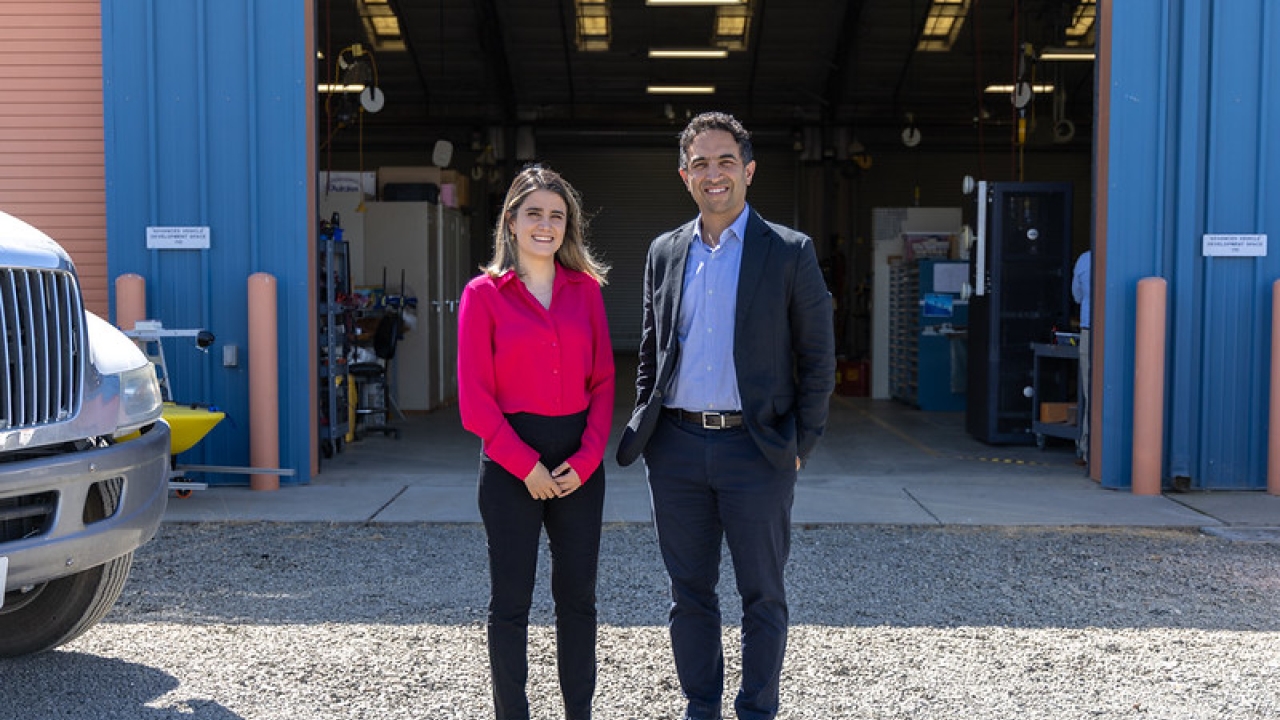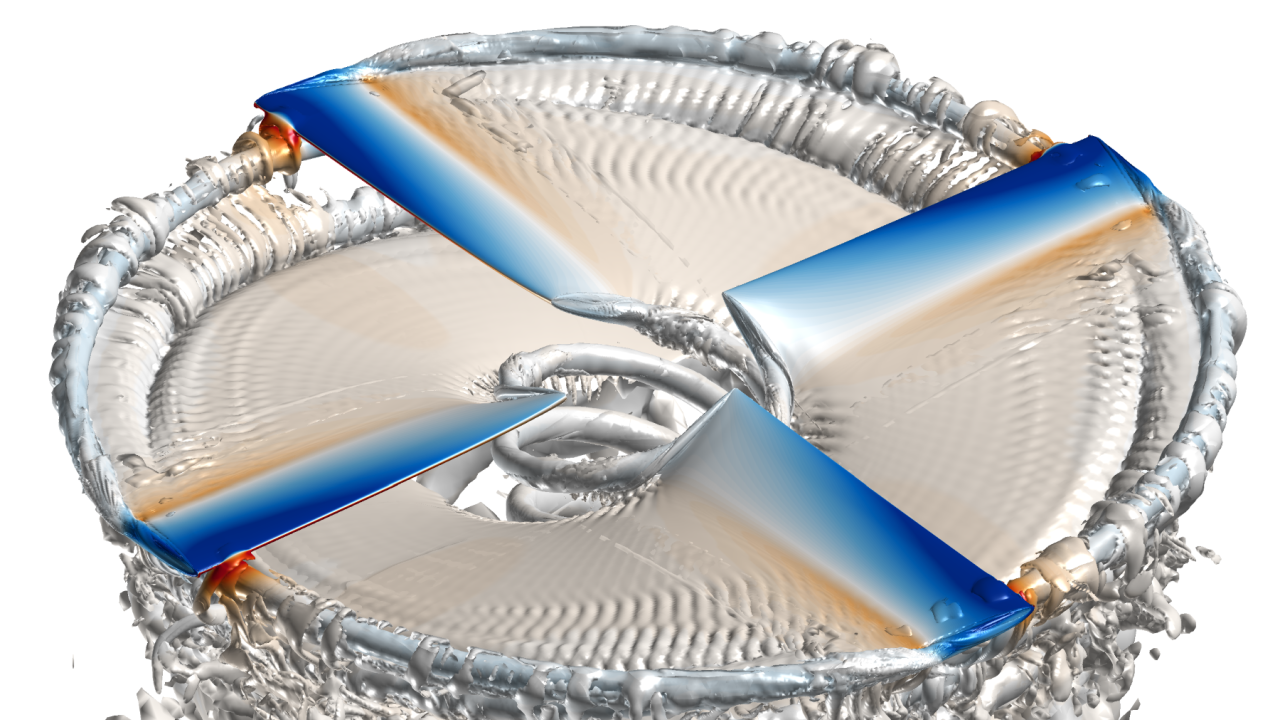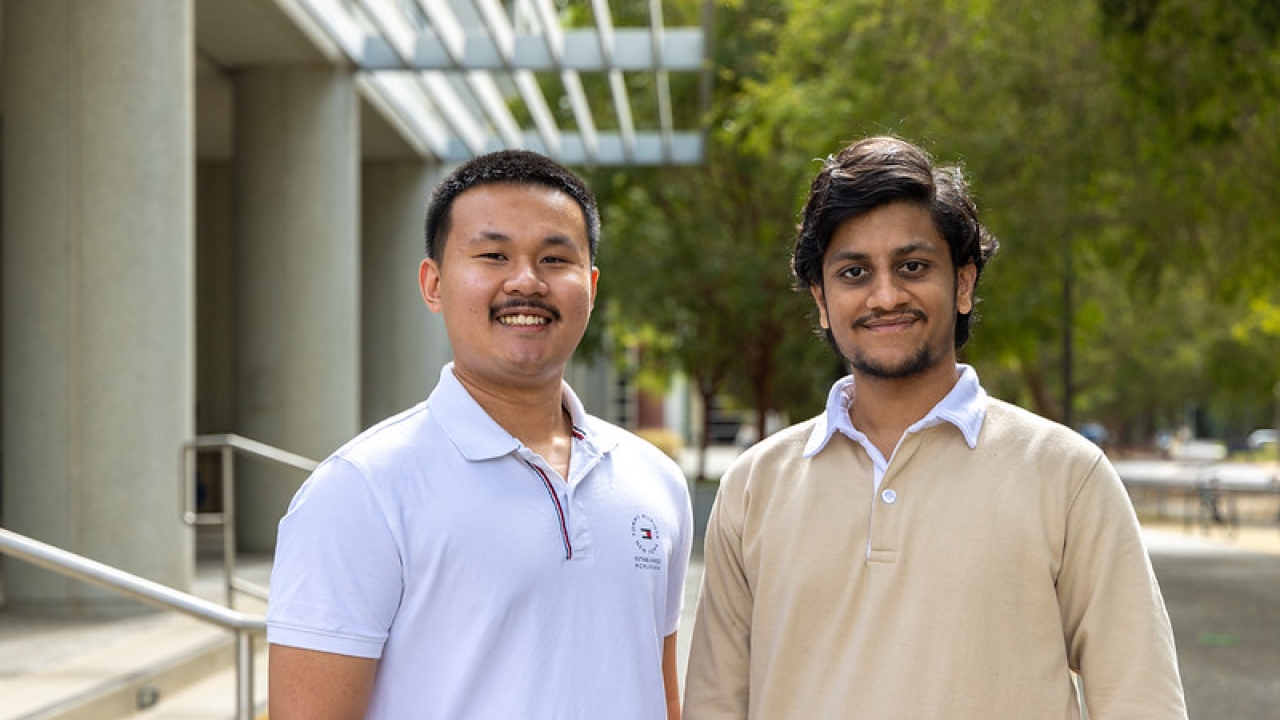
'Doing It All Here:' NIBIB Director Rings in 15 Years of Maroney-Bryan Lecture, Celebrates BME Department
Bruce Tromberg, director of the National Institute of Biomedical Imaging and Bioengineering, or NIBIB, rang in the 15th annual Maroney-Bryan Distinguished Lecture with a presentation on medicine and engineering partnerships.
The series invites industry experts and innovators to highlight how researchers in biomedical engineering, medicine and biotechnology can create next-level solutions and translate them to industry to bring a sustainable, healthier and more resilient world within reach. The series is made possible through the support of mechanical engineering alum and BME advisory board member John Maroney and his wife Sarah Bryan Maroney.

In front of a packed lecture hall in the Genome and Biomedical Sciences Facility in the southwest corner of the University of California, Davis, campus, Tromberg began his presentation with an acknowledgment. He said coming to UC Davis felt like a homecoming. Many of his colleagues, collaborators and former graduate students were in the audience: Department Chair Steve George, Distinguished Professor Emeritus Simon Cherry and Professor Angelique Louie, to name just a few.
He proceeded to discuss the establishment of NIBIB, part of the National Institutes of Health. Tromberg drew the audience's attention to the language in the act signed by then-President Bill Clinton in 2000, namely that the institution would support both research and related technology assessments and development in biomedical imaging and bioengineering.
He said this language was very forward-thinking, as he believes medicine and engineering to be an ideal match for driving innovation, entrepreneurship and diversity of new tools that improve human health.
After speaking about positive trends within NIBIB and the NIH, he turned his attention to the UC Davis Department of Biomedical Engineering. He wanted everyone to know about a phenomenon he has called the "George Effect."
The "George Effect" seeks to explain the rise in funded biomedical research from the NIBIB since George became chair of the Department of Biomedical Engineering in 2019.
Of particular note was the National Center for Interventional Biophotonic Technologies, or NCIBT, located at UC Davis. Professor of Biomedical Engineering Laura Marcu leads the center, which advances research in interventional fluorescence lifetime imaging, or iFLIM, and interferometric diffuse optical spectroscopy, or iDOS. Tromberg described the center as the "jewel in the crown" of NIBIB.
He moved on to discuss how the COVID-19 pandemic has affected the center and biomedical imaging and bioengineering as a whole. He said it has accelerated the need for solutions and quick responses to medical challenges.
Because of this, he feels that there is a unique opportunity right now for the community of researchers in biomedical engineering and medicine to collaborate on innovative new technologies that solve pressing human health problems.
"For the future, we're looking at a whole new wave of engineering and medicine partnerships, and you guys are doing it all here [at UC Davis]," he said, thinking of interdisciplinary projects within the College of Engineering and across campuses with UC Davis Health.








